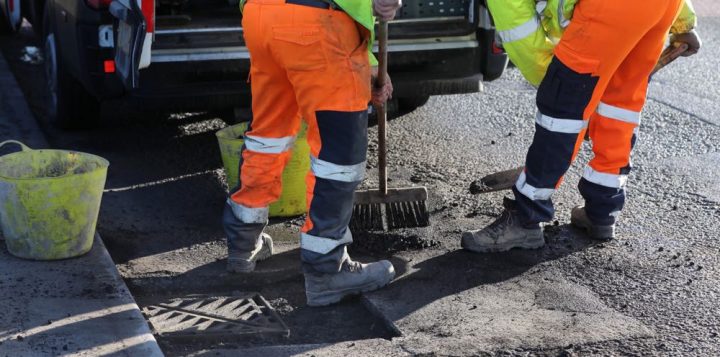More than 130,000 potholes across 266 miles of road in Wales have been fixed or prevented in the last six months.
Since April the Welsh Government has been working closely with local councils to deliver on its commitment of ‘Fixing our roads’.
The local government borrowing initiative has enabled local councils to fix or prevent around 107,000 potholes across 216 miles of local roads in Wales. Whilst on the Strategic Road Network (SRN) around 24,000 potholes have been fixed or prevented on more than 50 miles of road in the same period, thanks to Welsh Government funding.
To date 480 local resurfacing schemes and 20 trunk road resurfacing schemes have been completed across the country with more to come before the end of the financial year. Schemes such as A548 Abergele to Llanfair Talhaiarn in Conwy and Station Road, Rogiet to near Shakespeare Road, Caldicot in Monmouthshire are already making a big difference in the local community.
Cabinet Secretary for Transport and North Wales Ken Skates said, “Fixing our roads is a priority for this government.
“We are only six months into this programme, but I am delighted with the fantastic progress that’s been made so far, and there’s a lot more to come.
“We are now seeing the results of the additional £25m investment in our main roads, and the support for our local authorities to fix local roads.
“This work is already making a real difference to communities across Wales, addressing long-standing issues now, to make our roads more resilient for the future.”
But it’s a different picture across the UK.
The number of drivers falling foul of potholes and breaking down rose by 25% between July and September compared to the same period last year, according to new figures from the RAC’s Pothole Index.
RAC patrols attended 5,035 pothole-related breakdowns this summer for jobs such as broken suspension springs, distorted wheels and damaged shock absorbers – up from 4,040 during the same months in 2024.
This year’s figure is also significantly higher than the average number of these types of breakdowns typically recorded during the warmest months (4,372).
Over the 12 months to the end of September 2025, drivers were direct victims of potholes on a total of 25,758 occasions – an 11% rise on 23,147 during the same period a year earlier, and a concerning ‘early warning sign’ ahead of the generally colder, wetter months to come. On average, the RAC attended 71 pothole-related breakdowns a day over this period, up from 68 a day over the previous 12 months.
New RAC research shows that the condition and maintenance of local roads – those which drivers generally begin and end their journeys on – remains a top motoring concern for the nation’s drivers: forty-seven percent of those surveyed said the state of local, council-run roads is their top bugbear for 2025, although this is down from 56% last year.
And while six-in-10 UK drivers (59%) say the local roads they drive on are in a worse state this year than last, this is down sharply on the 73% who said the same in 2024. What’s more, the proportion of drivers that say these roads are in a better condition has reached 12% this year – double last year’s 6%.
Taken together, these figures suggest drivers feel the ‘rot’ has perhaps been stopped when it comes to the state of these roads. But despite this, three-in-10 drivers (29%) still said their vehicles had suffered from pothole-related damage over a 12-month period.
The RAC, alongside industry bodies such as the Road Surface Treatments Association (RSTA) and Road Emulsion Association (REA), has long argued that the solution to Britain’s broken roads is for local authorities to carry out more preventative maintenance. These treatments, which include surface dressing, keep roads in a better condition for longer, reserving resurfacing for the very worst roads that are beyond reasonable repair.
